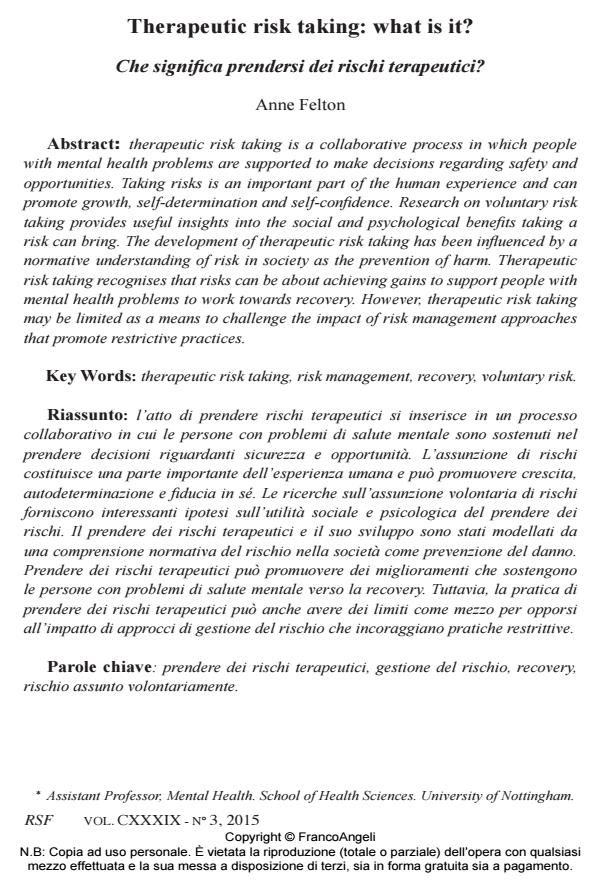Therapeutic risk taking: what is it?
Journal title RIVISTA SPERIMENTALE DI FRENIATRIA
Author/s Anne Felton
Publishing Year 2015 Issue 2015/3
Language English Pages 16 P. 89-104 File size 2190 KB
DOI 10.3280/RSF2015-003006
DOI is like a bar code for intellectual property: to have more infomation
click here
Below, you can see the article first page
If you want to buy this article in PDF format, you can do it, following the instructions to buy download credits

FrancoAngeli is member of Publishers International Linking Association, Inc (PILA), a not-for-profit association which run the CrossRef service enabling links to and from online scholarly content.
Therapeutic risk taking is a collaborative process in which people with mental health problems are supported to make decisions regarding safety and opportunities. Taking risks is an important part of the human experience and can promote growth, self-determination and self-confidence. Research on voluntary risk taking provides useful insights into the social and psychological benefits taking a risk can bring. The development of therapeutic risk taking has been influenced by a normative understanding of risk in society as the prevention of harm. Therapeutic risk taking recognises that risks can be about achieving gains to support people with mental health problems to work towards recovery. However, therapeutic risk taking may be limited as a means to challenge the impact of risk management approaches that promote restrictive practices.
Keywords: Therapeutic risk taking, risk management, recovery, voluntary risk
- Understanding Risk-Taking Jens O. Zinn, pp.1 (ISBN:978-3-030-28649-1)
- Therapeutic risk-taking: A justifiable choice Anne Felton, Nicola Wright, Gemma Stacey, in BJPsych Advances /2017 pp.81
DOI: 10.1192/apt.bp.115.015701
Anne Felton, Therapeutic risk taking: what is it? in "RIVISTA SPERIMENTALE DI FRENIATRIA" 3/2015, pp 89-104, DOI: 10.3280/RSF2015-003006